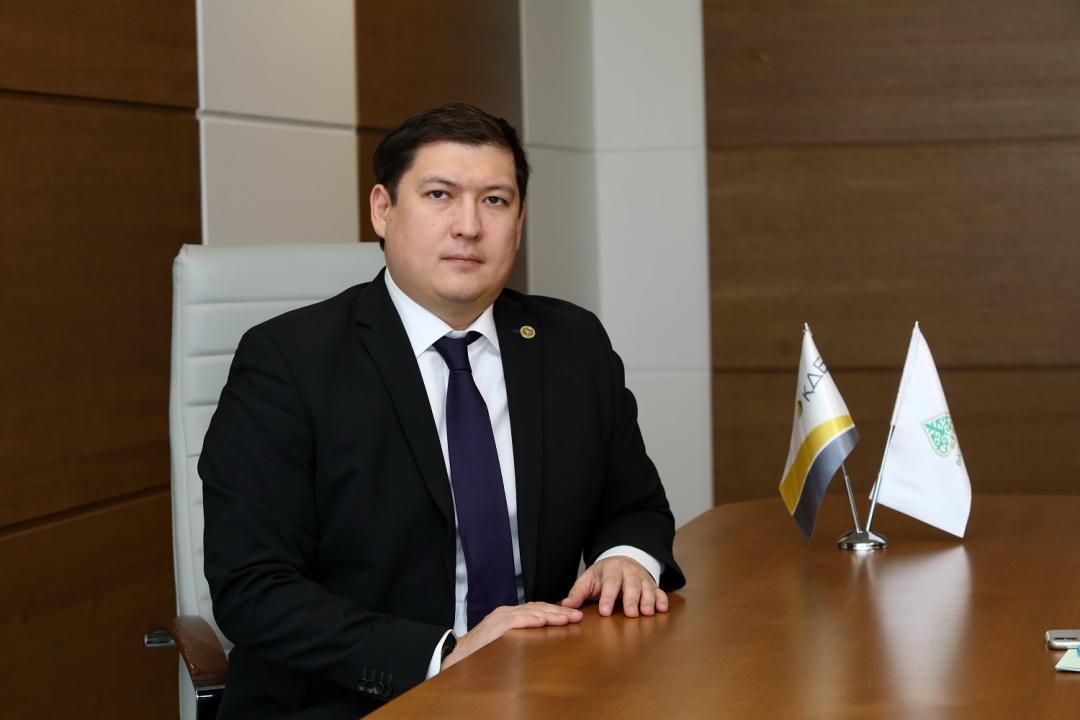
- According to the results of the 2018, the DBK has significantly increased its loan portfolio, bringing it to new all-time record of the organization – what is the progress of project lending done by the bank this year and is it projected to increase the loan portfolio?
- The Development Bank of Kazakhstan, in accordance with its Development Strategy, plans to invest about 4.4 trillion tenge in the period from 2014 to 2023 in the development of manufacturing and industrial infrastructure.
And as of this date, the Bank continues to maintain a good quality loan portfolio. The amount of mastered recourses invested into the development of projects amounted to 474.2 billion tenge, including interbank lending (451.2 tenge in 2018), the volume of the loan portfolio is 1.7 trillion tenge. As of November 30 of 2019, the share of non-performing loans from the gross loan portfolio was 2.2% and the level of provisions is 5.2%. Furthermore, heavy borrowers prepaid of obligations to the bank during 2019. This implies that they feel quite well and have the opportunity to redeem the loans of DBK ahead of time. We certainly welcome this kind of motion. Therefore, all the key performance indicators of the Bank set by our shareholder will be fully implemented at the end of the year.
It is planned to develop projects that worth about 430 billion tenge and 459 billion tenge respectively in 2020 and 2021. Thus the Bank plans to increase its loan portfolio volume up to two trillion tenge by 2021. This is the goal we are striving for.
- Last year, the management of DBK announced its intention to finance 11 large enterprises in 2019, a pipeline of projects totaling up to 371 billion tenge was formed – have you achieved these plans?
The Bank is showing a steadily large growth in project-tied lending in the manufacturing industry and infrastructure. During 2019 the Bank approved 13 projects for financing: 10 of them are investment projects with a total value of 1.002 billion tenge with contributions from DBK in the amount of 424.7 billion tenge, and 3 of them are pre-export operations in the total amount of 8 billion tenge.
All projects are meant to represent what we have repeatedly talked about during the year. These are the construction of a solar power plant with a capacity of 100 MW in the city of Kapshagay by ENEVERSE KUNKUAT LLP. Construction of the main gas pipeline Saryarka, which was long awaited in the capital city. The construction of the second stage of the Aktogay MPP in East Kazakhstan region, implemented by KAZ Minerals Aktogay LLP is a very important deal for us too. The project for the provision of broadband internet access to rural settlements in the framework of the Digital Kazakhstan program should also be noted. They are implemented by SilkNetCom LLP and Kazakhtelecom JSC. We also approved the project to finance the construction of a plant for the production of methyl-tert-butyl ether in the city of Shymkent and the second launch facility for 50 MW of the Astana EXPO-2017 wind power plant, the second stage of the broiler farm in Makinsk.
The pre-export financing of three Kazakhstani manufacturers exporting railway wheels, cable products and nitrogen fertilizers was also approved.
In addition it should be noted that projects that received earlier funding in the DBK were launched in 2019: they are the high-tech plant for the production of ferrosilicon in Karaganda YDD Corporation LLP,

a plant for the production of power transformers Asia Trafo LLP in the city of Shymkent,

the first launch facility of the wind power plant "Astana EXPO-2017" by Tsatek Green Energy LLP in the Akmola region,
as well as new workshops of the Kazakh engineering giant - AtyrauNefteMash LLP in Atyrau.

These are all significant projects that have a great multiplier effect on the industry of our country.
- Over the past five years, the Bank's share of credit operations in tenge has more than doubled – how do borrowers benefit from this and does the Bank intend to continue to adhere to this currency trend?
-The currency structure of the Bank's loan portfolio continues to show a positive trend of increasing the share of loans in tenge. The share of loans in the national currency in the structure of the loan portfolio increased from 42.5% in 2018 to 51.8% tenge. To date, the growth of the Bank's credit operations in tenge allows our borrowers to get access to financing in the national currency. This, in turn, significantly reduces currency risks for those who did not have currency earnings. Therefore, borrowers timely fulfill their obligations to the Bank. Currently, the flow of requests from clients for financing in tenge has increased. Everyone understands the advantages of the tenge in the economy, since many businesses have taken on currency risk in the recent devaluations and as of today are planning their financial models, develop business plans mainly in tenge. With this in mind, they build operating expenses.
- Does DBK have a necessity for loans in the domestic or foreign markets, or is its inventory amount cash in bank on hand at this point is sufficient enough for implementation of operative business?
-Taking into account that DBK is financing large-scale projects, the generated own amount of cash is not always enough. The Bank is an active issuer in the domestic and foreign markets. Funds are often raised in the domestic market, since the DBK credits projects in tenge under the industrialization program. As far as foreign currency investments is concerned, we raise funds in foreign currency only for projects that have foreign currency revenue. Thus, we as a matter of course hedge currency risks and do not allow our clients to shift these risks on to themselves. The Development Bank of Kazakhstan is a reliable and stable partner. The debut of Eurobonds in tenge has proved itself well - at good rates and on good terms. Taking into account our expertise, our rating, we fulfill our obligations. International investors are showing great interest in the Development Bank.
- About 80% of direct lending from the DBK volume is accounted for projects in the manufacturing industry – does the Bank intend to maintain this trend or is it considering the possibility of diversifying the amount of industries in the portfolio?
- In 2013-2015, we had largely concentrated on projects in the oil industry and metallurgy. As of today, diversification has increased. We are now actively financing projects in the chemical industry, mechanical engineering, export financing, interbank and other industries.
The Bank will pay attention to the manufacturing industry of course, work more intensely with rifle-shot-funded projects. For example, not just non-ferrous metallurgy, but rare earth metals, chemical industry, pharmaceuticals and everything related to the agricultural sector and processing as well.
We are also actively developing our competence in the field of RES (renewable energy sources). The RES is currently one of the most attractive investment niches in Kazakhstan. The government has done a lot of work in terms of legislation and it is possible to receive special tariffs for the implementation of projects in this area. At the moment, DBK has implemented four projects in The RES – in the segments of wind power, solar energy, and hydropower. In other words, we are also diversifying our portfolio with renewable energy sources.
- What else has been done this year and is planned for the next year?
-If we talk about the results of the year, we have a large flow of transactions. Therefore, we continued to automate business processes. Since May, we have completely switched over to electronic digital signature, thereby reducing the entire hard-copy paperwork. We have translated completely everything that is not limited by law into the EDS. This significantly reduced the time for document review. Another important aspect is the human capital in the Bank. We pay great attention to training, improving the skills and competencies of our employees. Over the course of this year, we have trained several internal coaches who work with our employees, increasing their competence not only in their own speciality, but in other areas as well.

I would also like to note that a lot of work is carried out by the Board of Directors of the Bank, who are actively involved in the Bank's life. This year the Board of Directors includes two representatives of Baiterek holding. They make a huge contribution to strategic management. Members of the Board of Directors took part in the visiting session, having preliminary visited our financed facilities. Projects are not only reviewed in the office, we also visit the objects once they are approved. We plan to continue this practice.
We have more ambitious plans for the next year: it is planned to redesign the Bank's strategy. There are strategic initiatives that are very important to us, and we want to enter export markets. The Bank has almost no competitors, there are the necessary competencies. If there are questions within Kazakhstan that we can compete with second-tier banks somewhere, few people go to foreign export markets and lend such deals. We will actively carry out this work next year and bring our exporters to foreign markets.
Also, one of the areas that we plan to develop strategically are the "green" projects. These are not only the RES, but also projects in the manufacturing sector that pollute the environment less. In general we do all of this in the Bank, but, unfortunately, it is not yet standardized and regulated. This is a new trend for the banking sector. We are actively working with the OECD, holding strategic sessions with them, and in 2020 we plan to sign a road map for a two-year period. For the first six months, they will fully analyze the Bank's activities and its legislation.
Another strategic initiative that we will work on is the so-called "Project Factory", where we will invite second-tier banks to participate in joint project financing. We know that they have liquidity, but second-tier banks are not always ready to take on project risks during the investment phase. Therefore, we will completely cover project risks – we have the necessary competence and expertise for that. After the successful launch of the project it will seized by the second-tier banks to refinance it. We in turn will look for the next project, thereby increasing the turnover of our liquidity and issuing it to the economy faster. At the same time, we understand that it is necessary to observe a good quality of assets so that a second-tier bank can seize the project for itself. This is a model that will probably be of interest to both second-tier banks and borrowers. It is important for the Development Bank that we find more niches and interesting projects so that they maintain their work. This is the vision for next year's strategy: export, more projects with second-tier banks, "green" initiative.
And one of the important things that we also plan to offer as a strategic initiative is working with international development institutions. We have worked well with the Eurasian Development Bank on the Saryarka gas pipeline this year. We jointly implemented the project through bond-secured loan. Next year we hope to develop this sphere. There are reliable partners: Vnesheconombank, the Eurasian Development Bank, China Development Bank. Literally at the beginning of December the President visited Germany. We have signed an agreement with Deutsche Bank, Commerzbank, Export Credit Agency - Euler Hermes, which are also ready to participate in co-financing and financing of investment projects in Kazakhstan in liaison with the DBK. We will actively issue such deals to the market.












